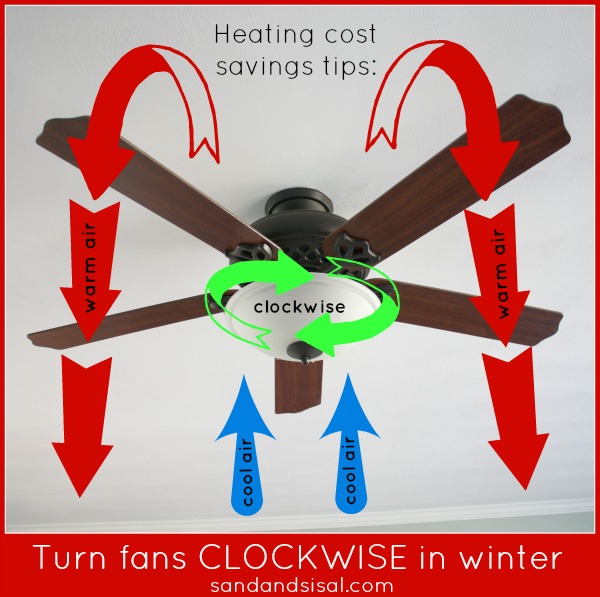

In reality, a fan in reverse (winter) probably wouldn't pull much air out of the first floor and move it to the second.

During the winter, you’ll want to switch. The motion will circulate the cool air during the summer. Then of course, Dan comes over and says, "You know, that fan is in the winter direction and you should really."Īs for your stairwell - fans can blow a long way, but they can only suck air that is immediately behind them. Evergy said to make sure ceiling fan blades are rotating in a counter-clockwise direction. The air flow down the walls was very cooling. I've had great results running the fan on high in "winter mode" when the seating was on the edge of the room. Seating arrangements, ceiling height, and fan position can change that generic diagram so the final rule is "do what makes you comfortable". That's really the definition of a "rule of thumb". Now, some of that is pretty sound advice and in a lot of situations it works well. During spring and summer, your ceiling fan should turn counterclockwise, so the fan blades push cold air downward, making your home feel cooler. The fan should pull air up from the center of the room and thus push air in a gentle curtain around the outside of the room to "get the warm air off the ceiling". In the winter, you don't want that air blowing directly on you, but rather than just idle that fan for 6 months out of the year, they give you a new idea - use the fan (on a lower speed) to gently circulate the air to give an even temperature throughout the room. It's not about air temperature in the summer, it's about air movement and blowing air down at people and allowing the air to blow from the center towards the walls.
#Fan clockwise in summer skin#
In the summer, you want the fan to blow down and that blowing air will hit your skin and make you feel cool. At the end of the day, the best way to tell if your fan is in summer mode is to stand underneath it.This is the typical explanation given, and the diagram is normally of a fan on the ceiling and a couch sitting under the fan to represent the furniture and people in the room. While it’s true that most fans spin counter-clockwise when they’re in summer mode, some models work differently. Keep in mind that there may be some exceptions to the examples we’ve outlined above. If you have an AC fan, it will have a reverse switch on the motor. Ceiling fans with a DC motor are usually reversible by the remote.
#Fan clockwise in summer how to#
If you’re not sure how to activate your fan’s reverse feature, start by checking what type of motor you have. It’s pushed from underneath the ceiling, back into the room. Circulating air like this also keeps the warm air moving. Reversing your ceiling fan’s direction draws cooler air up. So even though the heater is on, the room still feels quite cool! The heated air rises until it’s sitting under the ceiling. This is an excellent tool in winter when you’re using a heater. Voila! You feel cooler.Ī fan spinning in a clockwise direction draws air upwards. This helps any perspiration on your skin to evaporate quicker. The direction makes a huge difference in how the fan moves air. If you’re standing within range of the fan, it will move air around you. Fan blades can spin both clockwise and counterclockwise. To achieve this, fans spins counter-clockwise, creating a draught. In summer, a ceiling fan has one job: to create a windchill effect. Because each direction works differently, it’s important that your fan is spinning in the best direction for the season. This functionality gives ceiling fans a “summer mode” and a “winter mode”. This spin direction makes the blades create an updraft, sucking cold air up and forcing the room’s warmest air (remember, heat rises) downward toward the room’s occupants. In the winter, the fan should spin the opposite direction: clockwise. All it takes to reverse a ceiling fan is the flick of a switch or touch of a button. Summer Counterclockwise Winter Clockwise. A lot of customers don’t realise that most ceiling fans can spin in both directions: clockwise and counter-clockwise. They can also help you heat your home efficiently. A counterclockwise (summer) motion brings cool air downward and. If you use them right, ceiling fans can offer you more than a simple cooling solution. The clockwise (winter) motion redistributes the warm air around the room, making it feel warmer. Knowing which way a ceiling fan should go in summer will help you get the most out of your fan. How do you know which way a ceiling fan should go in summer? Ceiling Fans with User Replaceable LED Lights.


 0 kommentar(er)
0 kommentar(er)
